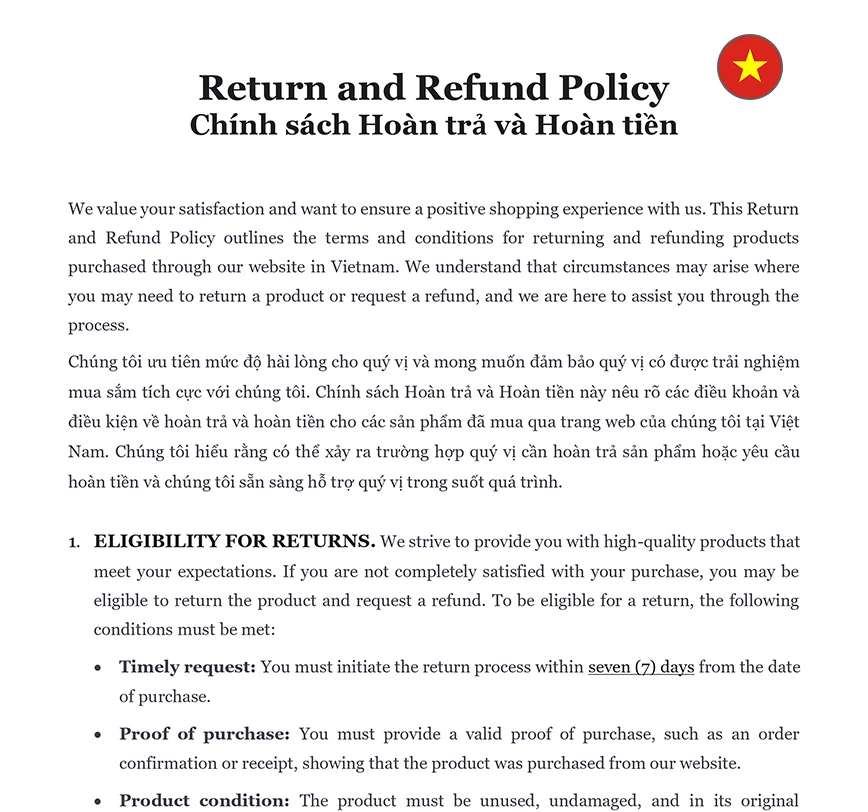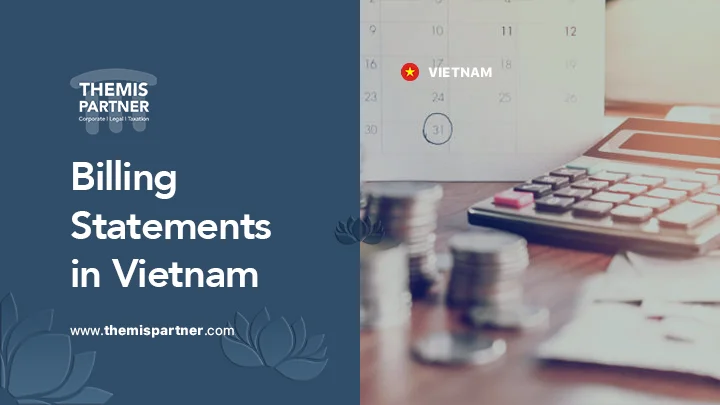What is a Refund Policy?
A refund policy is a formal document that specifies the conditions under which a customer can return purchased products or services and receive a refund. It is a fundamental aspect of customer service and plays a key role in legal compliance. A well-drafted refund policy helps manage customer expectations by clearly outlining how returns and refunds will be handled. In Vietnam, ensuring that your refund policy aligns with local consumer protection laws is essential. The Vietnam Competition and Consumer Authority (VCCA) provides guidelines on these laws, which can be accessed through their official website Vietnam Competition and Consumer Authority.
Key Elements of a Refund Policy
When crafting a refund policy, it’s important to include several key elements to ensure it is comprehensive and clear. Here’s a breakdown of each element:
1. Eligibility Criteria: Define the specific conditions under which customers are eligible for a refund. This includes detailing which products or services are refundable and specifying any time constraints. For instance, you might state that items can be returned within 30 days of purchase, and they must be unused and in their original packaging. This section should also address any conditions under which refunds might not be granted, such as for custom-made items or digital products. Draft clear refund policies with our Return and Refund Policy template.
2. Return Process: Clearly outline the procedure customers need to follow to return items or request a refund. This should include step-by-step instructions on how to initiate a return, including any necessary forms or contact information. For example, customers might need to contact your customer service department via email or phone to receive a return authorization number. Additionally, provide details on how the item should be packaged and shipped back, including any specific addresses or shipping methods to be used. For managing customer interactions online, consider using our Cookie Consent to ensure transparency in the process.
3. Refund Amount: Specify how refunds will be calculated. This includes detailing any deductions that may apply, such as restocking fees or shipping costs. For instance, if your policy includes a restocking fee of 10% of the purchase price, this should be clearly stated. Explain how refunds will be processed, including whether the full amount or a partial refund will be issued based on the condition of the returned item.
4. Refund Method: Indicate the method by which refunds will be processed. This could be a refund to the original payment method, store credit, or a replacement product. Clearly state how long it will take for the refund to be issued once the return is received. For example, you might specify that refunds will be processed within 7-10 business days of receiving the returned item.
5. Exceptions: List any exceptions to the refund policy. This includes items that cannot be returned or refunded, such as perishable goods, personalized items, or items on sale. Providing a clear list of exceptions helps manage customer expectations and prevent misunderstandings. For example, you might state that gift cards or downloadable software are non-refundable.
Legal Requirements for a Refund Policy in Vietnam
In Vietnam, your refund policy must adhere to the Consumer Protection Law and other regulations set by the Ministry of Industry and Trade (MOIT). These laws are designed to protect consumers and ensure fair business practices. According to MOIT Ministry of Industry and Trade, businesses are required to provide a clear and transparent refund policy that meets the standards set forth in these regulations. This includes ensuring that the policy is accessible to customers and that it addresses all required elements as outlined by Vietnamese law.
- Remarks:
Ensure compliance with our Privacy Policy and Terms and Conditions to align your refund policy with local regulations.
Return and Refund Policy: Best Practices
Implementing best practices for your return and refund policy can enhance customer satisfaction and reduce disputes. Consider the following strategies:
| ➤ Transparency: Make sure your refund policy is easily accessible to customers. It should be prominently displayed on your website, typically in the footer or on a dedicated policy page. Ensure that customers can easily find and read the policy before making a purchase. For more on crafting user agreements, check out Drafting Website and App Terms of Use. |
| ➤ Clarity: Use clear and straightforward language in your refund policy to avoid ambiguity. Avoid legal jargon and ensure that the terms are easy for customers to understand. For instance, instead of using technical terms, explain the refund process in simple, everyday language. To enhance clarity and data protection, explore Creating a Privacy Statement That Protects User Data. |
| ➤ Consistency: Apply your refund policy consistently across all transactions. This means ensuring that the same rules and procedures apply to all customers, regardless of their purchase or return history. Consistent application of the policy helps build trust and ensures fairness. |











